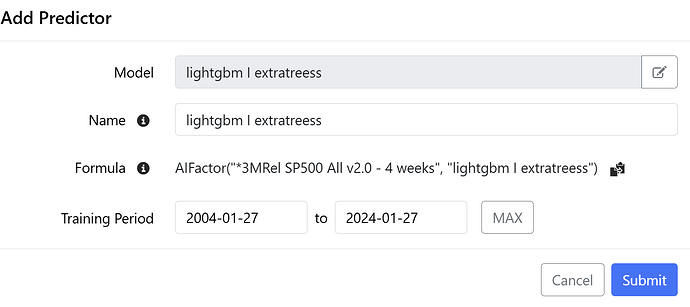Gents,
Wanted to suggest a feature for AI Factor. It would be very useful if we could enter Custom Non-Contiguous Date Ranges in both the Validation and Prediction portions of AI Factor. A couple of reasons for this:
1.) Divide Financial History by Market Environments
One could argue that the current methods are naive. It doesn’t allow the user to break up financial history by market environments. Easiest example of this is the GFC. For certain strategies (especially MicroCap focused strategies) returns can be dominated by performance during the GFC. It would be nice to able to break-up Validation and Prediction time periods taking this into account. Maybe I want to exclude the GFC entirely, or I want to make sure just one of my Validation folds contains the GFC time period, etc.
2.) Create Ensemble Models
One thing that I worry about with the current system is that the Prediction model tends to be trained on the full time period, while the Validation model is trained on 5 different folds. I think you could make a case that taking the average rank from the 5 Validation models would be more robust than taking the single rank from the Prediction model trained over the whole time period (the influence of the GFC discussed above is a potential cause of this). By allowing Custom Non-Contiguous Date Ranges in the Prediction section I can generate a Predictor for each fold and then average them in a Ranking System.
Probably some other use cases for this feature, but I find these two to be compelling.
Cheers,
Daniel
